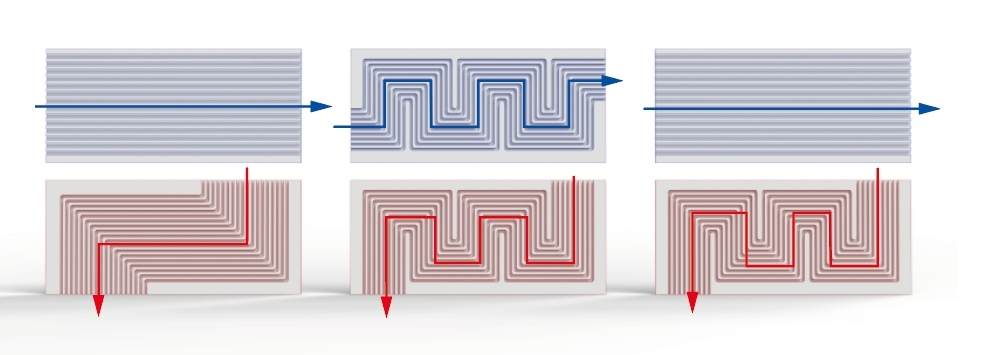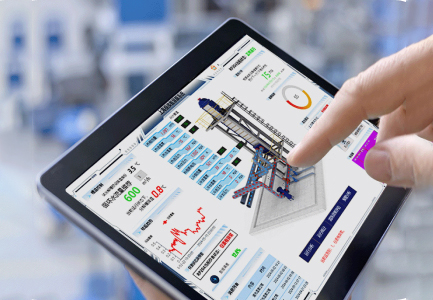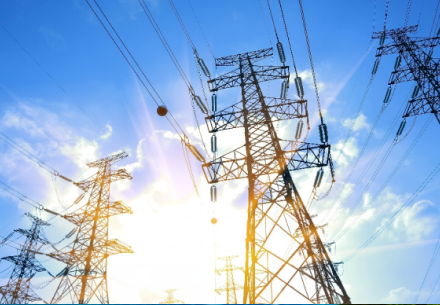
Products
Printed Circuit Heat Exchanger
Certificates: ASME, NB, CE, BV, SGS etc.

The Printed Circuit Heat Exchanger (PCHE) is a groundbreaking innovation in heat exchange technology, tailored for demanding industrial applications. Emerging in the late 20th century, PCHEs were developed to address the limitations of traditional heat exchangers in extreme environments. Their compact, high-efficiency design quickly gained traction in industries requiring robust performance under high pressures and temperatures.
Initially adopted in nuclear power and aerospace sectors, PCHEs revolutionized heat transfer processes by offering unparalleled reliability and space efficiency. Over time, their use expanded to LNG liquefaction, hydrocarbon processing, and renewable energy systems, where they play a critical role in enhancing operational efficiency and reducing environmental impact.


In search of expert advice? Our experienced engineers stand ready to assist you. Discover more about our heat exchangers and compl-ementary services, all designed to precisely align with your needs.
contact us
Product Details
-

What is Printed Circuit Heat Exchanger?
Printed Circuit Heat Exchanger (PCHE) is a highly compact and efficient heat exchanger designed for extreme operating conditions. PCHEs excel in high-pressure, high-temperature applications (up to 900°C and 1,000 bar) where traditional exchangers fail, such as LNG liquefaction, nuclear reactors, supercritical CO₂ power cycles, and aerospace systems. Their microchannel design maximizes heat transfer efficiency by offering a large surface-area-to-volume ratio, while the diffusion-bonded construction ensures exceptional mechanical strength and corrosion resistance. Key advantages include compact size, durability, and precise thermal performance, making them ideal for energy-intensive industries prioritizing space and reliability. -

How is Printed Circuit Heat Exchanger constructed?
PCHE is constructed from thin metal plates, typically made of stainless steel or nickel alloys, which undergo a precise chemical etching process to create intricate microchannel patterns on their surfaces. These microchannels are meticulously designed to optimize fluid flow and heat transfer efficiency. The etched plates are then stacked in a specific configuration and subjected to a diffusion bonding process under high pressure and temperature, resulting in a robust, monolithic structure that ensures superior thermal performance and leak-proof integrity.
One of the key advantages of PCHE technology lies in its exceptional design flexibility. The corrugation profiles of the plates can be custom-engineered to meet specific process requirements. This adaptability allows PCHEs to accommodate varying flow rates, pressure drops, and thermal loads, making them suitable for a wide range of operating conditions.
Product Advantage
-
Compactness
Printed Circuits Heat Exchanger features a remarkably compact design, with a footprint 5–10 times smaller than conventional shell and tube heat exchangers, making it an ideal solution for space-constrained applications. -
High Efficiency
PCHE boasts an impressive overall heat transfer efficiency of up to 98%, enabling rapid and substantial heat exchange within a short timeframe, thereby significantly enhancing production efficiency. -
Durability
PCHE demonstrates exceptional durability, capable of withstanding extreme operational conditions with pressures 1000 bar and temperatures 850°C.
Product Parameters
| Parameter Item | Parameter |
|---|---|
| Max. Area | 8000㎡ |
| Channel Gap | 0.4 – 4mm |
| Design Temperature | -196 ~ 850℃ |
| Max. Design Pressure | 1000 Bar |
| Plate material | 304, 316L, 2205, Titanium, C-276 |
How to design and manufacture
Printed Circuit Heat Exchanger
Design
- Designing a Printed Circuit Heat Exchanger (PCHE) requires a multidisciplinary approach combining Thermal-Hydraulic, Microchannel Geometry Optimization mechanical, and manufacturing considerations.
Material Selection
- Base Materials: Stainless steel (SS316L), nickel alloys (Inconel 625), or titanium, chosen for corrosion resistance and high-temperature performance.
- Plate Thickness: Typically, 0.5–2 mm, depending on pressure and thermal requirements
Microchannel Etching
- Coating: Apply a photoresist layer to metal plates.
- Masking: Use UV light to transfer microchannel patterns (designed via CFD) onto the photoresist through a photomask.
- Etching: Immerse plates in a chemical bath (e.g., ferric chloride for stainless steel) to dissolve exposed areas, creating precise microchannels (100–500 µm wide).
- Cleaning: Remove residual photoresist and debris.
Diffusion Bonding
- Stacked plates are placed in a vacuum furnace.
- Apply high temperature (70–95% of material’s melting point, e.g., 900–1,000°C for SS316L) and pressure (10–30 MPa) for several hours.
- Atomic diffusion bonds plates into a monolithic block without filler material.
Assembly
- Headers/Manifolds: Weld or bolt external headers to direct fluid flow.
- Insulation/Coating: Apply thermal barrier coatings for extreme-temperature applications.
- Leak Testing: Pressurize with helium or water.
- Thermal Performance: Validate heat transfer rates and pressure drop via lab testing.
Applications of Printed Circuit Heat Exchanger
Printed Circuit Heat Exchangers (PCHEs) are widely used in the natural gas processing industry, particularly in processes requiring efficient heat transfer, compact design, and resistance to high pressure and temperature. Their high thermal efficiency, space-saving structure, and ability to withstand extreme conditions make them a critical component in this sector.
-
 Heat Exchange Solutions for Offshore IndustryOffshore modular engineering is a highly technical and comprehensive project, combining specialized design, precision manufacturing, stringent quality control, and full-service after-sales support. These solutions are tailored to meet the unique demands of the marine and ship environments.
Heat Exchange Solutions for Offshore IndustryOffshore modular engineering is a highly technical and comprehensive project, combining specialized design, precision manufacturing, stringent quality control, and full-service after-sales support. These solutions are tailored to meet the unique demands of the marine and ship environments. -
 "Smart Eye" - Intelligent Guardian Expert for Heat ExchangersIn industrial production, the stable operation of heat exchangers is directly related to production efficiency and energy security. As a globally leading heat exchanger manufacturer, Shanghai Plate Heat Exchanger has pioneered the "Smart Eye" digital monitoring system. This system, centered on artificial intelligence, edge computing, and digital twin technologies, provides global customers with full lifecycle intelligent operation and maintenance solutions, ensuring that every heat exchanger maintains enduring vitality.
"Smart Eye" - Intelligent Guardian Expert for Heat ExchangersIn industrial production, the stable operation of heat exchangers is directly related to production efficiency and energy security. As a globally leading heat exchanger manufacturer, Shanghai Plate Heat Exchanger has pioneered the "Smart Eye" digital monitoring system. This system, centered on artificial intelligence, edge computing, and digital twin technologies, provides global customers with full lifecycle intelligent operation and maintenance solutions, ensuring that every heat exchanger maintains enduring vitality. -
 Heat Exchange Solutions for Power IndustryPower industry is essential for modern life, driving economic growth and sustainability through advancements in renewable energy, smart grids, and energy storage. It plays a critical role in reducing carbon emissions and ensuring reliable energy access. Plate heat exchangers are vital in this sector, enhancing energy efficiency by optimizing heat transfer in power plants. Their compact design and high efficiency reduce energy consumption and operational costs, supporting sustainable thermal management. Together, the power industry and plate heat exchangers are key to advancing global energy solutions and achieving a greener future.
Heat Exchange Solutions for Power IndustryPower industry is essential for modern life, driving economic growth and sustainability through advancements in renewable energy, smart grids, and energy storage. It plays a critical role in reducing carbon emissions and ensuring reliable energy access. Plate heat exchangers are vital in this sector, enhancing energy efficiency by optimizing heat transfer in power plants. Their compact design and high efficiency reduce energy consumption and operational costs, supporting sustainable thermal management. Together, the power industry and plate heat exchangers are key to advancing global energy solutions and achieving a greener future.
Related articles
Read More
To Provide You with Better Service
Honor Our Common Journey,Develop Authentic Alliances,Create Collective Success.
Leave Your Message
* Full Name
* Country/Region
* Email
* Company name
* Telephone Number
* Enter your needs

SHPHE has complete quality assurance system from design, manufacturing, inspection and delivery. It is certified with ISO9001, ISO14001, OHSAS18001 and hold ASME U Certificate.



